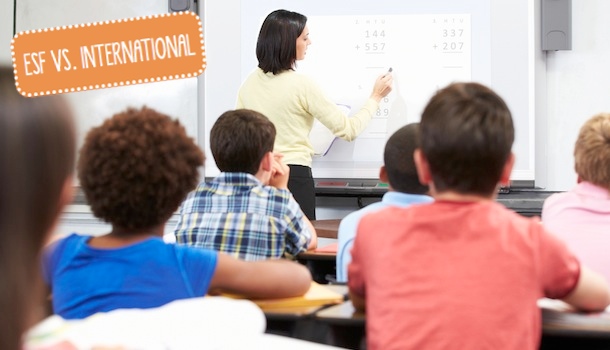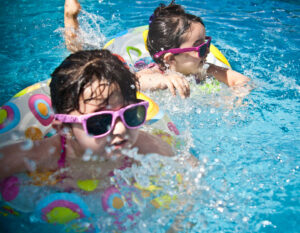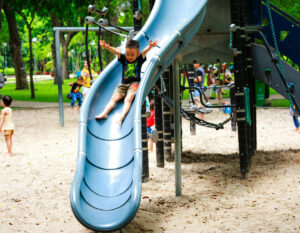
I am currently 37 week pregnant, and beginning to think about education options for my son, but am unsure whether International School or ESF would be a better choice. What are the advantages and disadvantages of International Schools versus ESF?
Parents often ask about the difference between an ESF school and an International School at primary level.
Here are a few differences to note:
| ESF | International/Private |
| Partially government funded and partially funded by fees (until 2016) | Mostly funded by fees |
| Catchment area system – apply to only ONE ESF school based on your home address | No geographical restrictions; can apply to a school near or far from home, and as many as you like. |
| Fully accredited to offer IB curriculum | Free to run any curriculum, or a mix of curricula |
| Less competitive | Popular schools fiercely competitive |
| Class size large at 30 | Class sizes vary between 11 and 28 |
Let’s consider how ESF compares to the alternatives at three stages: preschool, primary and secondary.
Preschool
ESF operates four – soon to be five – kindergartens under its affiliated company, ESF Educational Services Limited. Previously, students at these kindergartens earned priority when being considered for a place at primary. This priority has been abolished starting with selections for the AY 2014/15.
International kindergartens are numerous. They run various curricula, adopt various approaches and vary in their selection criteria and process. Some are more reputable than others. One of the very best tools in selecting a kindergarten is to analyse their graduation statistics. If the kindergarten has a good track record in having their students accepted by the primary schools you’re interested in, this would be worth considering seriously. ESF kindergartens don’t share this data and, even if they did, it will take quite a few years for any patterns to emerge under the new policy.
So, why choose an ESF kindergarten?
Judge an ESF kindergarten using the same criteria you’d use to judge any other kindergarten. Some plus points for ESF include the established brand name and reputation, based on excellent teaching staff and a solid curriculum and fully accredited by IBO.
Primary
ESF’s nine Primary schools start at Year 1 (age five). Parents can apply to only one school, based on their home address.
All schools are similar in that they follow the PYP curriculum and cost $70,000 per year (AY 2013/14). Otherwise, ESF schools vary in size, diversity and culture.
International schools vary wildly. Very few are charging fees as low as ESF.
Secondary
Under normal circumstances, a student graduating from an ESF primary school is offered a place in the secondary school of their catchment area. ESF operates only five secondary schools.
All schools offer IB MYP and IB DP – either UK GCSEs or International GCSE. As an alternative to the IB DP, BTec is also offered for students preferring a more practical approach to learning.
ESF’s IB DP results are impressive: In 2013, 98.4% of candidates passed the IB Diploma with an average score of 34.7 points (out of 45).
Cost, Competition & Catchment.
A few final words on three areas:
Cost: Without a doubt, ESF schools provide a high quality education for a lot less than other schools, made possible by government funding. The trade-off, however, is the large class size. All this is bound to change in 2016/17 when the government will no longer be subsidising ESF students. For more information on these changes, see this article.
Competition: At ESF schools, the competition is not nearly as intense as it is at some other top international schools. Roughly 2.1 applications are received for every available place. This ratio is up to 10:1 in some other schools. ESF schools do select students to some extent, but the process is not too rigourous. That said, it’s risky to apply to one ESF school without any back-ups.
Catchment: The catchment area system means that parents don’t have flexibility to choose the school they prefer. Applications are received only from eligible students with proof of address within the catchment area. If the student moves outside the catchment area, they may stay in the original school or apply for a transfer. A transfer will be successful only when a place becomes available. Until then, the student will attend the original school, which may or may not have a bus route to the new address.
At other international and private schools, no such restriction exists.
 View All
View All










 View All
View All




 View All
View All


 View All
View All









